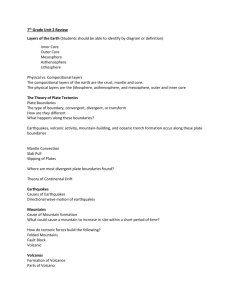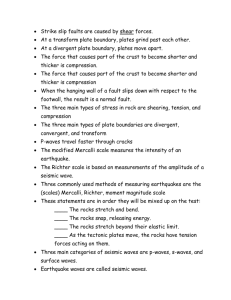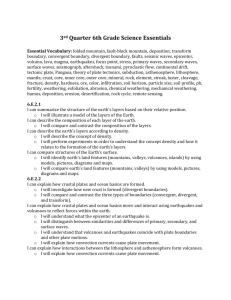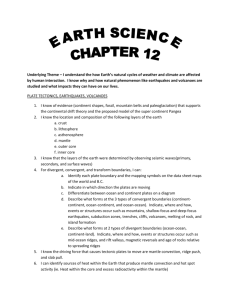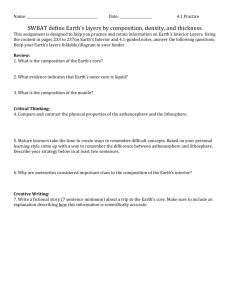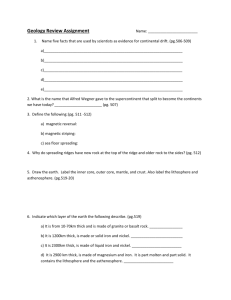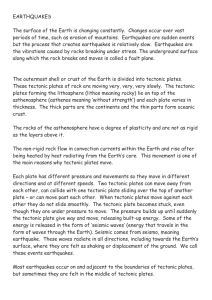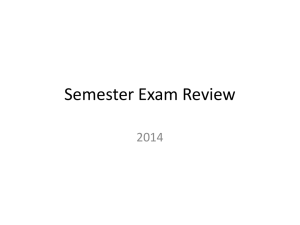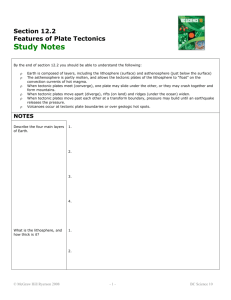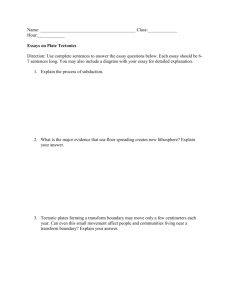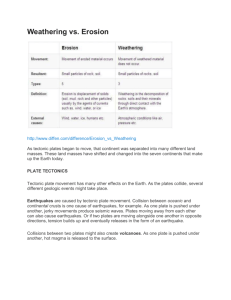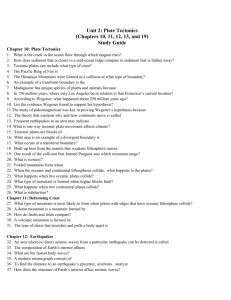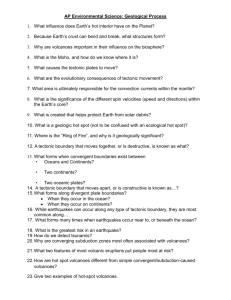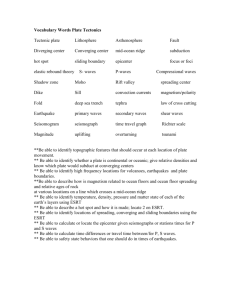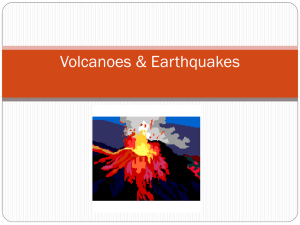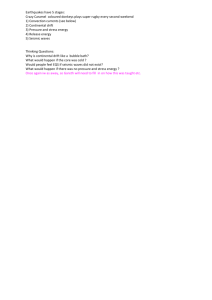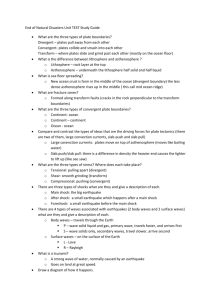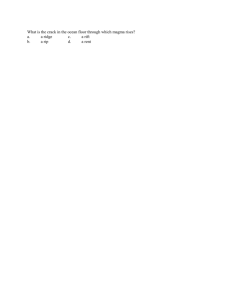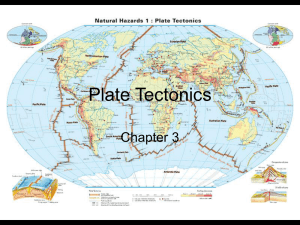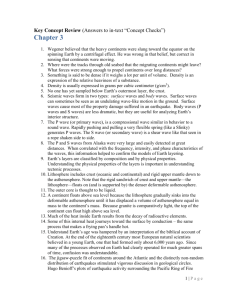Plate Tectonics, Earthquakes & Volcanoes Review Sheet
advertisement
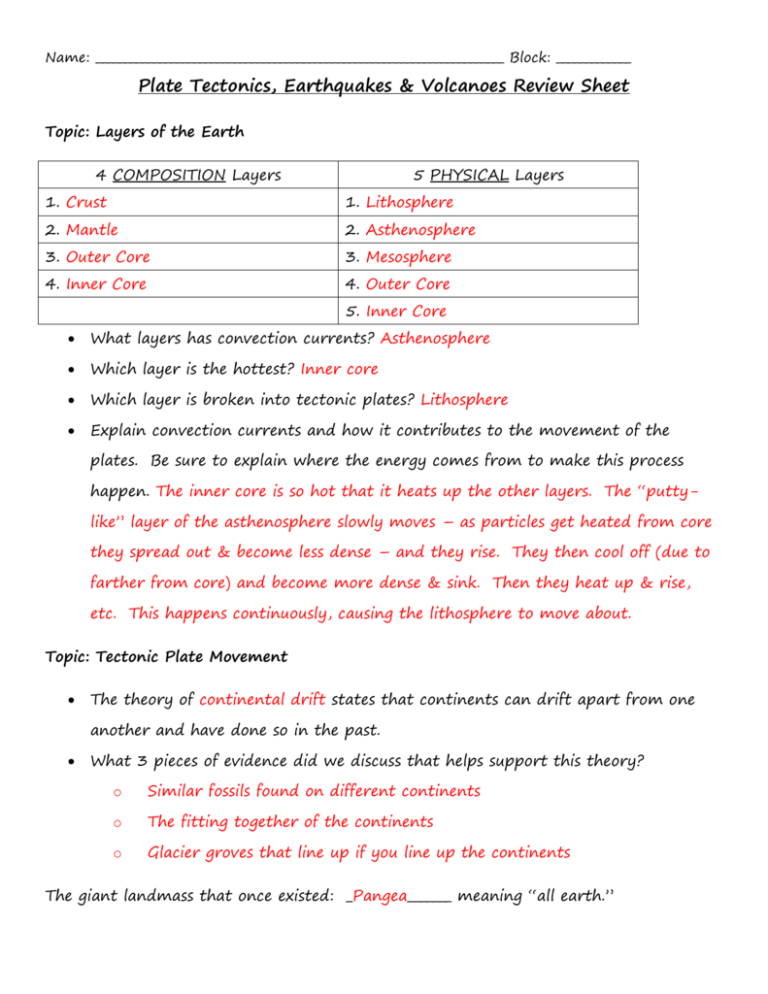
Name: _______________________________________________________________________ Block: _____________ Plate Tectonics, Earthquakes & Volcanoes Review Sheet Topic: Layers of the Earth 4 COMPOSITION Layers 5 PHYSICAL Layers 1. Crust 1. Lithosphere 2. Mantle 2. Asthenosphere 3. Outer Core 3. Mesosphere 4. Inner Core 4. Outer Core 5. Inner Core What layers has convection currents? Asthenosphere Which layer is the hottest? Inner core Which layer is broken into tectonic plates? Lithosphere Explain convection currents and how it contributes to the movement of the plates. Be sure to explain where the energy comes from to make this process happen. The inner core is so hot that it heats up the other layers. The “puttylike” layer of the asthenosphere slowly moves – as particles get heated from core they spread out & become less dense – and they rise. They then cool off (due to farther from core) and become more dense & sink. Then they heat up & rise, etc. This happens continuously, causing the lithosphere to move about. Topic: Tectonic Plate Movement The theory of continental drift states that continents can drift apart from one another and have done so in the past. What 3 pieces of evidence did we discuss that helps support this theory? o Similar fossils found on different continents o The fitting together of the continents o Glacier groves that line up if you line up the continents The giant landmass that once existed: _Pangea_______ meaning “all earth.” Name: _______________________________________________________________________ Block: _____________ __Sea__ __floor___ Spreading is the process by which new lithosphere is created as older materials are pulled away (ex: of a divergent boundary). 3 Types of tectonic plate boundaries are: Convergent (plates collide), Divergent (plates divide), Transform (plates slide) Topic: Earthquakes Why do earthquakes occur? Where do they often occur? They occur as tectonic plates move around and when built up stress is released. The vibrations when the plate move can be felt as seismic waves. They often occur along plate boundaries and along ring of fire. What do scientists study with earthquakes? (What can they find out about?) They can study where an earthquake started, how strong it is, how much damage, size, etc. They CANNOT predict or prevent them. Waves of energy are called _seismic___ waves. There are two types: Body waves – _S______ and __P_____ waves. o __P____ waves travel quickest and through solids, liquids & gases. o _S___ waves travel less quickly and only travel through solids. __Surface_______________ waves – travels along the surface of the earth. Which boundary creates the strongest earthquakes? Convergent Topic: Volcanoes How are volcanoes formed? Formed along hot spots (weak spots in crust where mantle rises – Ex: Hawaii) or convergent boundaries as mantle is pushed up. Where are they often located? Ring of fire, hot spots, boundaries What affects do volcanic eruptions have on the environment (both biotic and abiotic)? Biotic: Smother crops, kill animals; Abiotic: affect water supply, block out sunlight & affect temperatures, destroy homes, etc.
